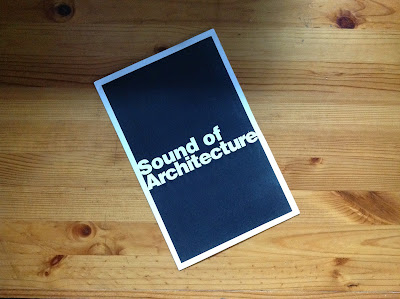Yale School of Architecture
"The Sound of Architecture"
October 6, 2012 11am - 1pm
The Question of “sound”
The second to last session of the symposium was structured as a panel discussion moderated by Michelle Addington. Participants included Craig Hodgetts, Raj Patel, Joel Sanders, Brigitte Shim, and Karen Van Lengen. While we had not heard from Karen Van Lengen within the context of the symposium previously, she collaborated with Joel Sanders on several projects discussed in his lecture and gave a brief intro to her own work. I am quite disappointed that Karen did not get a chance to speak more, as I found that she had insightful comments and a thoughtful perspective on the subject of the interplay between sound and architecture stemming from her own interest to encourage the desire to listen in a more conscious way.
DESIGNING ARCHITECTURAL SOUNDSCAPES
Michelle Addington, who is a wonderfully articulate speaker, began with a presentation addressing the science of sound broken into four disciplines of study, namely:
physical phenomena (theoretical physics),
phenomenological behaviors (applied physics/engineering),
human psychology (neuroscience), and
human perception (perceptual psychology).
Addington stated that compared with visual science, our understanding of theoretical physics and neuroscience in relation to sound are particularly lacking. While the actual discussion was framed around the concerns below (see photo), the majority of the conversation revolved around the current relationship of architecture and acoustics. For the most part, acousticians/acoustical consultants are brought in when there is an especially unique or “privileged” experience that must be accommodated and considered, for instance that of a performance hall. In general, acousticians are not consulted by architects with regards to “everyday” environments and conditions, or rather those conditions beyond the scope of a single room. Part of this arises, in my opinion, because architects are not trained to consider the acoustical nature of spaces, and the profound effect that architectural choices (material, geometry, adjacencies etc) has on sound environments and vice versa. Sanders contended that explorations of quotidian spaces fall within the realm of sound scholars and artists, but at this point remains unaddressed by architects. At one point, when Patel, an acoustician, suggested that a rule of thumb for architects to keep in mind when designing was that for every 1 cubic meters of volume one should add 0.2 seconds of reverberation time, someone responded that architects do not want to, and should not, design according to a formula. Of course this is an overreaction, but it serves to illustrate the disjunctive relationship between architects and the sound spaces they end up creating most often by accident and as a resulting effect rather than an integrated consideration. What I found distressing about the discussion was the fact that the speakers kept referring to “sound” as if it was a specific and predictable effect, like light. There was no acknowledgement that when they are talking about “sound” they are actually talking about occupation and activity. I feel that this is one of the fundamental mistakes that often happens when talking about the behavior of sound in spaces, and I think that once the understanding of sound and space is conceived of an understanding of inhabitation, there will be great advancement in the creative approaches to defining spaces.
.JPG) |
| Raj Patel, Karen Van Lengen, Brigitte Shim, Joel Sanders, Craig Hodgetts |








.JPG)





